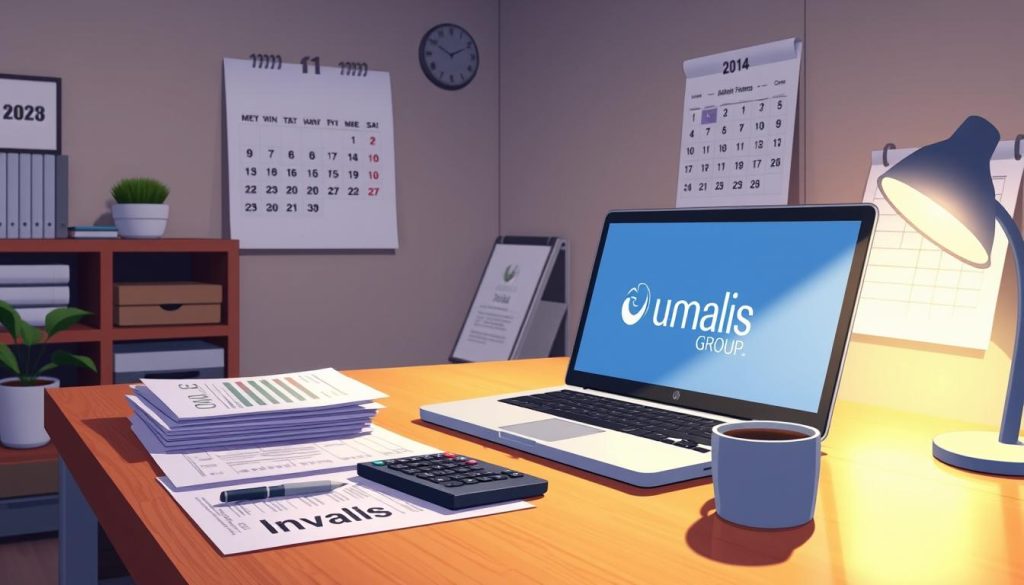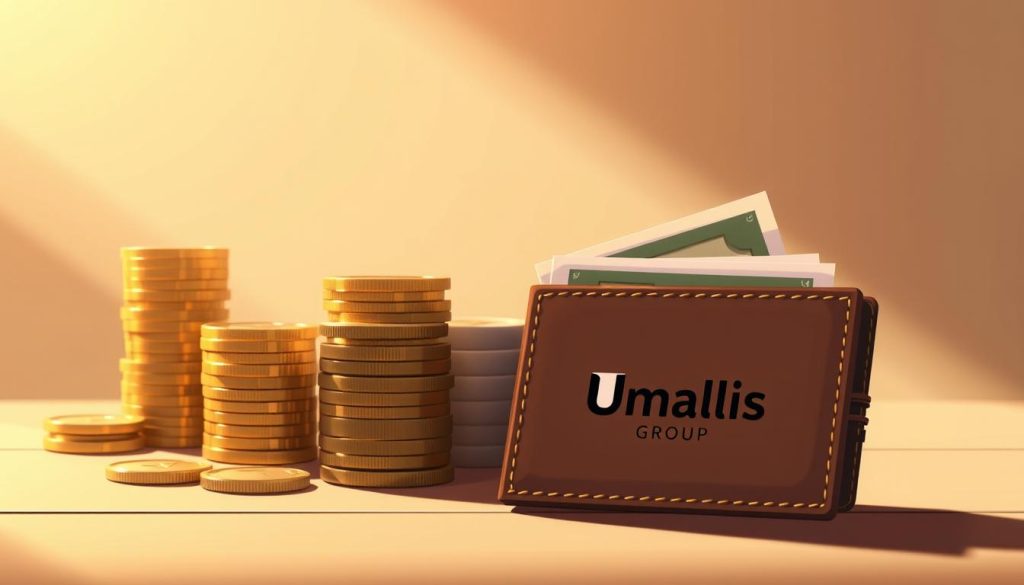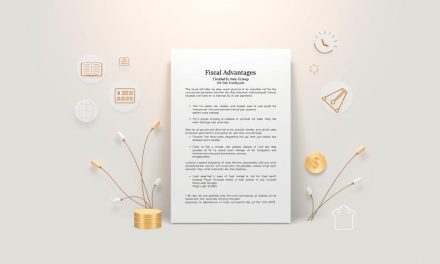We know irregular income and quarterly taxes in France can feel overwhelming. Our guide shows clear, practical steps you can take to cover bills, reduce debt, and build a safety cushion. You will get a simple plan that fits freelance rhythms.
Start small, win often. Separate business and personal accounts, calendar recurring bills, and set aside a month of expenses first. These habits smooth cash flow and ease stress.
Next, we focus on paying down debt, saving 3–6 months of expenses, and investing for the long term. This approach makes your income more predictable and gives you peace of mind about the future.
Table of Contents
Key Takeaways
- Build predictable systems to manage irregular income.
- Use simple budgets and small goals to reduce debt and save.
- Fund a 3–6 month emergency cushion to protect your cash flow.
- Align daily choices with long-term plans to become more financially secure.
- Focus on routines and checkpoints to lower stress and increase resilience.
Why financial security matters now for independent professionals in France
For freelancers in France, building a reliable cash buffer turns sudden setbacks into short-term inconveniences.
Irregular income and quarterly tax deadlines make planning essential. A modest cushion helps when a client pays late or a project shifts. It prevents an emergency — like a broken laptop or urgent car repair — from disrupting rent or subscriptions.
We recommend simple, realistic steps that respect your current situation.
- Stabilize monthly expenses and expect slow months.
- Spend below your income and trim avoidable costs.
- Set short checkpoints to grow a small cushion quickly.
| Immediate action | Why it helps | Quick target |
|---|---|---|
| Separate business and personal accounts | Keeps cash flow clear and simplifies taxes | One dedicated account |
| Build a starter emergency fund | Handles urgent repairs without new debt | €500–€1,000 |
| Calendar quarterly charges | Prevents surprises and late fees | Allocate 25% of monthly income |
Adopting these habits reduces the chance that short-term debt becomes long-term. With modest planning, you free time and attention to grow your business and protect your life choices. Start small, stay consistent, and you will become more financially secure over time.
Understanding financial security vs. financial stability
Distinguishing immediate stability from lasting protection clarifies which actions matter now and later.
What financial security means: living without high-interest debt, covering monthly needs, keeping accessible reserves for emergencies, and investing for the future. This is the long-term state where your income supports goals and brings peace.
What stability is today: the ability to pay bills, absorb small shocks, and keep short-term savings intact through normal ups and downs.
How to move from stability to lasting security
Start by eliminating costly debt, then build a starter emergency fund. Automate transfers to savings and retirement as income grows. Don’t inflate expenses with each pay increase—direct extra money toward resilience.
“Stability is a milestone; full security is the system that prevents a lean month from derailing core costs.”
| Focus | Stability | Security |
|---|---|---|
| Primary aim | Cover current bills and small shocks | Live debt-free, fund future goals |
| Typical actions | Track income, cut variable costs | Pay off debt, invest, automate savings |
| Result | Short-term calm and predictability | Long-term peace and consistent growth |
For a clear plan that ties income to long-term goals, see our step-by-step guide on building a durable plan for the future.
Get a clear picture of your current finances
Begin by mapping what comes in and what goes out so you know exactly where you stand each month.
Map your income streams — list clients, retainers, fixed projects, hourly work, seasonal peaks, and side gigs. This shows variability and helps set a realistic income floor.
Track expenses clearly. Separate essential costs (rent, utilities, insurance) from business purchases (software, tools, marketing) and personal spending. A clear ledger shows where you can trim.

Review debt and credit
Inventory all balances, minimums, interest rates, and due dates. Note credit limits and utilization so you spot concentration of risk fast.
Set near-term and long-term goals
Pick small, achievable targets first: a one-month buffer or a specific balance to reduce. Then plan for 3–6 months of expenses and retirement contributions as longer-term financial goals.
| Action | What to record | Quick target |
|---|---|---|
| List income sources | Retainers, projects, side gigs, seasonality | Realistic monthly floor |
| Categorize expenses | Essential, business, discretionary | Clear monthly totals |
| Inventory debt & credit | Balances, rates, limits, due dates | Payoff priority list |
| Cash-flow view | Match invoices to deposits and bills to due dates | Monthly reconciliation |
Choose a simple budget format you will keep, set calendar reminders for taxes and bills, and run a short weekly review. Use these insights to take control and prioritize actions that raise stability and long-term financial security.
Build a budget that works with irregular income
Create a flexible budget that adapts to income swings and keeps your essentials covered. Start with a clear average of recent receipts so allocations stay realistic.
Use the 50/20/30 rule
50% needs, 20% savings, 30% wants. Use the rule as a baseline: 50% of your average monthly income for essential expenses, 20% for savings and debt reduction, and 30% for discretionary spending.
Set an income floor and a buffer
Determine an “income floor” based on your leanest recent month. Keep a buffer account holding one month of expenses to cover slow months.
When months are strong, sweep surplus above the floor into the buffer first, then toward emergency savings or paying down balances.
Tools and routines to control money
Calendarize bills and automate minimums so essentials clear on time. Build a rolling three-month cash forecast to spot tight spots early.
- Choose tools that match your style: spreadsheets, YNAB, Moneydance, or Excel templates.
- Assign weekly caps for variable costs and hold a 30-minute weekly check-in to compare plan vs. actual.
- Tie updates to your goals and celebrate small milestones to stay consistent.
Small steps taken each month reduce stress and build durable security.
For a deeper plan on independence, see our guide to build durable independence plan.
Take control of debt and credit cards
Debt diverts money from your goals. We recommend a calm, structured plan that reduces expense leaks and restores control.
Cut reliance on credit cards to reduce risk and stress
Decide not to add new balances. Freeze cards, remove them from wallets, or switch off online saved details to break the cycle.
Prioritize paying debt with a focused snowball approach
List debts from smallest to largest. Pay minimums on all but the smallest, then channel every spare euro to clear that first balance.
- Roll the freed payment to the next debt to keep momentum.
- Set automatic payments to avoid missed due dates and fees.
- Track balances monthly with a simple chart to see progress.
Avoid creating new balances while you pay down existing debt
If multiple high-rate accounts exist, consider a hybrid approach: target the most expensive balance early while keeping the snowball wins.
Keep a minimal emergency buffer so unexpected costs don’t force you back onto a card mid-paydown.
Small steps—fewer payments, less stress, and clearer cash flow—speed your path to long-term financial security.
Build your safety net: emergency fund and short-term savings
Begin by setting a small, named reserve that handles minor surprises without derailing your plan.

Start with a practical starter fund (for example, €1,000). This covers small repairs or a short client delay while you reduce consumer debt.
Once high-rate debt is cleared, aim for a full 3–6 months of essential expenses. The precise target depends on how variable your income is; higher volatility justifies more months.
Where to keep the fund for access and stability
Park this money in a separate, high-yield savings account labeled “Emergency Only.” That preserves capital, keeps funds liquid, and avoids market risk when you may need cash fast.
- Automate a fixed transfer on payday to build steadily.
- Keep sinking funds (equipment, annual insurance) separate from the core reserve.
- Refill the fund promptly after any withdrawal to restore your safety net.
A reliable fund helps you feel more financially secure and negotiate from strength when choices arise.
Invest wisely for retirement and wealth building
After you clear high-rate balances and secure a reserve, direct a set percent of income to long-term investments. This step helps you turn steady work into growing wealth for the future.
Securities basics
Bonds are debt instruments that pay interest. Stocks offer ownership and growth potential. Funds such as mutual funds or ETFs bundle many securities to give instant diversification.
Diversification and planning
Diversify across asset types, sectors, and regions. That spreads risk and smooths returns over years.
Practical allocation and habits
- Sequence matters: prioritize debt payoff and a full emergency fund first.
- Choose low-cost, broad-market index funds or ETFs as a core holding.
- Automate contributions each time you get paid to build consistency despite variable income.
- Align allocation with your horizon and risk tolerance, and rebalance periodically.
« A simple, rules-based approach removes guesswork and grows retirement savings steadily. »
Small, regular steps keep your plan manageable and let compounding work in your favor. This approach supports long-term goals and improves overall financial security without high complexity.
Financial security through ongoing education and planning
Building money skills and a monthly habit of review turns uncertain months into manageable ones.
Commit to learning. Read credible articles and books, and consult advisors who explain concepts clearly. This helps you act with confidence when markets or clients shift.
Build money skills: credible articles, books, and advisors
Choose a short reading list and one trusted advisor or mentor. Quality sources reduce guesswork and save time.
Practical tip: follow one reputable blog, one book, and one advisor. Rotate topics—taxes, savings, investing—so your skills grow steadily.
Monthly reviews to adjust your budget, savings, and investments
Schedule a 30–60 minute review each month. Check budget variances, progress on savings, and forecast cash flow based on new client leads.
Track leading indicators like invoices issued and proposals sent. Those numbers help you anticipate income changes and adjust plans early.
Reduce stress and gain peace of mind with consistent routines
Use a simple checklist each month: cash flow, obligations, goals. Document decisions so you can repeat what worked in slow periods.
Small, steady steps build habits that protect your time and advance long-term goals.
| Practice | Monthly action | Outcome |
|---|---|---|
| Continuous learning | Read one article or chapter; meet an advisor | Improved money judgment |
| Monthly review | 30–60 min checklist: budget, savings, forecasts | Fewer surprises; better planning |
| Leading indicators | Track invoices, proposals, pipeline | Earlier insight into income shifts |
| Document & adapt | Record decisions and results | Reusable playbook for slow months |
For practical guidance on protecting your income and work life, see our note on job security. Over time these steps make you more stable, more confident, and better prepared for the future.
Conclusion
Wrap up with a clear plan that turns small monthly habits into lasting resilience.
Focus on steady steps: live below your means, cut reliance on a credit card for surprises, and follow a simple paying-debt method. Build a starter emergency fund, then grow it to cover 3–6 months of essential expenses.
Automate transfers, calendar bills, and run quick weekly checks. These routines reduce stress and give you control over money and time.
When the fund is solid, direct more toward retirement and diversified investments to grow wealth for long-term goals. To learn how to achieve financial security in practice, see our detailed guide: achieve financial security.
FAQ
What does ensuring financial security mean for independent professionals?
Ensuring financial security means having control over income and expenses, a plan to reduce debt, and savings that cover emergencies and future goals like retirement. For freelancers and consultants, it includes steady cash flow management, an emergency fund, and deliberate investments to protect your income over time.
Why does this matter now for independent professionals in France?
Independent work often brings irregular income, changing taxes, and fewer employer benefits. Building cash buffers, separating business and personal finances, and planning for retirement reduce risk and stress—helping you stay resilient through slow months, market shifts, or unexpected costs.
How is financial security different from financial stability?
Stability refers to day-to-day predictability—covering bills and managing cash flow. Security is broader: it adds reserves for shocks, a debt-reduction plan, and investments for long-term goals. Both are needed: stability first, then layered measures to reach full security.
How do I get a clear picture of my current finances?
Start by listing income sources (clients, retainers, side gigs), then track fixed and variable expenses and separate business from personal costs. Review outstanding debts, interest rates, and credit card usage. Finally, set near-term (3–12 months) and long-term goals to guide decisions.
What budgeting approach works with irregular income?
Use a variation of the 50/20/30 rule adapted to your cash flow: define an income floor for essentials, allocate a portion to savings and debt repayment, and set discretionary limits. Build a buffer account for slow months and calendarize bills so fixed costs are predictable.
Which tools help manage money and bills effectively?
Practical tools include budgeting apps (e.g., YNAB, Bankin’), simple spreadsheets, and automated transfers for savings and bills. Use calendar reminders for tax payments and recurring invoices to clients to smooth cash flow and reduce missed deadlines.
How should I handle credit cards and debt?
Reduce reliance on cards by building an emergency fund and using debit for routine expenses. Prioritize debt repayment with a focused method—snowball for motivation or avalanche for interest savings—and avoid adding new balances while tackling existing debt.
What size emergency fund should I aim for?
Start with a small starter fund (one month of core expenses) to avoid new credit use. Aim to grow to three to six months of living costs once income is steadier. Adjust the target if you have irregular income, large dependents, or variable business expenses.
Where should I keep my emergency fund?
Keep it accessible and low-risk: a high-yield savings account or a money market account. These options maintain liquidity while earning moderate interest—helpful for unexpected expenses without market volatility.
When should I start investing for retirement and wealth building?
Begin once you have a starter emergency fund and have reduced high-interest debt. Contribute regularly, even small amounts, to retirement accounts or ETFs. Time in the market and consistent allocations matter more than perfect timing.
Which basic investment types should I know?
Understand three core categories: debt instruments like bonds, equity like stocks, and pooled options like mutual funds or ETFs. Diversify across these to manage risk and align allocations with your time horizon and goals.
How do I balance investing while still saving and paying debt?
Prioritize high-interest debt first, maintain a starter emergency fund, then split surplus income between additional savings and low-cost investments. Rebalance as debts fall and the emergency fund reaches target levels.
How can ongoing education improve my money decisions?
Regular learning—through reputable articles, books, and certified advisors—builds confidence and reduces costly mistakes. Focus on tax rules, retirement vehicles available in France, and basic investment principles to make informed choices.
How often should I review my budget and plans?
Conduct monthly reviews for cash flow and expenses, quarterly checks for debt progress and savings, and an annual review for major goals like retirement allocations or business investments. Small, regular adjustments prevent surprises and reduce stress.
How does planning reduce stress and improve peace of mind?
Clear routines—automatic savings, scheduled bill payments, and defined goals—transform uncertainty into predictable actions. That structure lowers anxiety, helps you respond to shocks, and keeps you focused on building long-term well-being.





